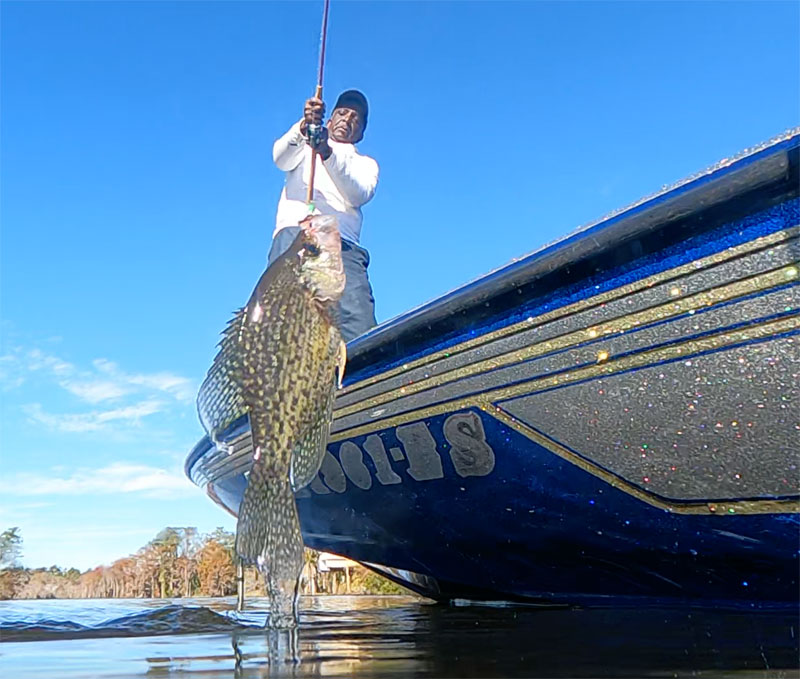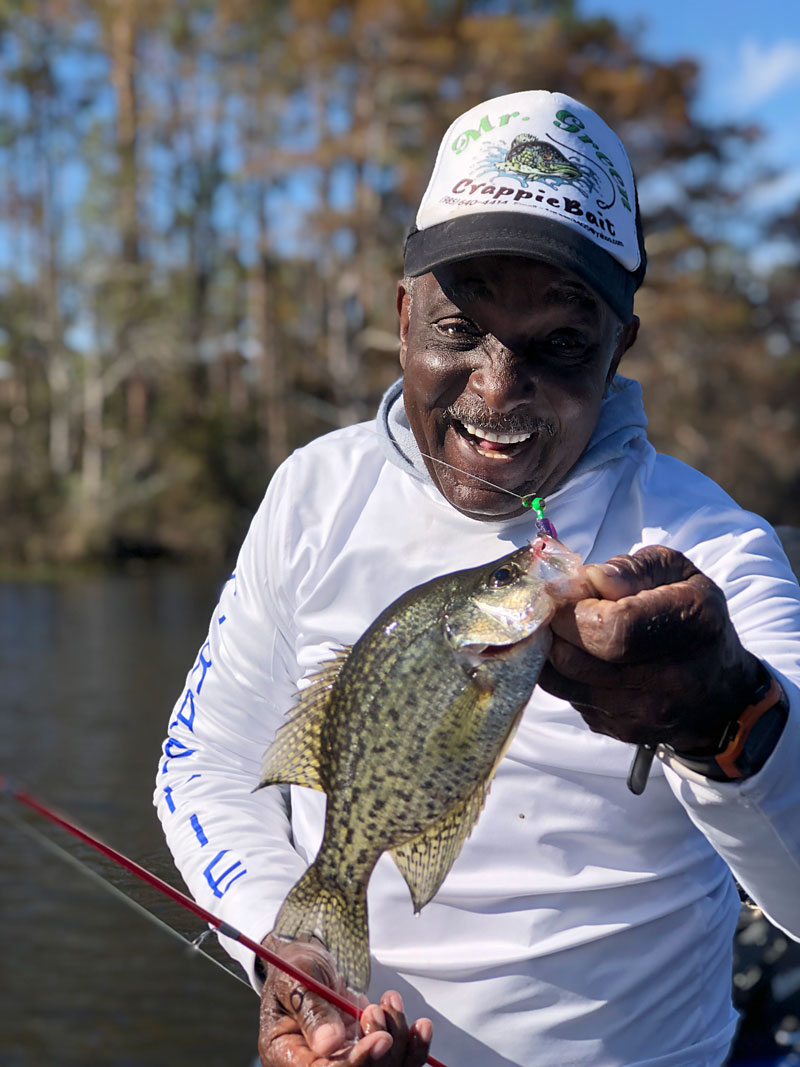
In the world of crappie fishing, finding a pattern is oftentimes the key to figuring out the fish. How the fish react to certain conditions can be vital to knowing where and how to catch them. Conditions like current, temperature, barometric pressure, and sunlight can drastically affect the way these fish behave.
Forrest Green of Lacombe said the sac-a-lait are following their normal pattern for the month of January in Bayou Lacombe.
“Hurricane Ida spared Bayou Lacombe but I can’t say the same for some of the other rivers and bayous on the Northshore,” he said. “When Ida came through, it took an uncharacteristic path that placed tributaries to the west in the eye-wall. Areas like Pass Manchac, the Amite River, Tickfaw River, and Tangipahoa River, all suffered fish kills. Thankfully, things are slowly getting back to normal.”
Green said it’s a safe bet to fish the rivers east of the Tchefuncte River. This is a complete flip-flop of what areas are normally affected by storms.
“Normally the areas like the Pearl River, Bayou Liberty, and Bayou Lacombe suffer from tidal surge, but this storm was different in that the rivers that feed into western Lake Pontchartrain suffered more with the surge,” he said.
Eliminate the shallows
Born and raised in Lacombe, Green has been fishing Bayou Lacombe for over 60 years and said the cold temperatures in January make things easy because the fish group together tighter.
“Where I find one, there’s likely more to come so I don’t have to do as much running like the rest of the year,” he said.
Green recommends eliminating shallow water and all shoreline fishing.
“In January it’s very rare to see these fish in less than 5 feet of water so my normal spots near the bank will be vacant of fish,” Green said.
While shallow water is off limits for him, it still factors into the cold weather equation.
“Some of the shallow laydowns that I normally catch sac-a-lait in the warmer months still hold value because those fish will often find deep holes which are nearby,” he said. “Those deep holes are sometimes as close as 10 feet from where I normally catch them in the shallows.
The main bayou
When targeting sac-a-lait in January, Green said he primarily fishes in the main bayou.

“That’s where I find the deeper holes where they stack up,” he said. “Plus the main bayou tends to be cleaner after a heavy rainfall.”
The only reason he’ll move out of the main bayou is because of current. Green said the sac-a-lait in Bayou Lacombe don’t react well to heavy water movement.
“If I see that water falling too hard, I’ll have to find calmer water back in a dead-end canal somewhere which Bayou Lacombe has plenty of,” he said.
Cold water technique
As far as baits go, Green likes to keep multiple ultralight rods with 8-pound monofilament line on the bow so he can try different colored jigs. He’ll try different jigs until he finds what the fish want. In his younger days, Green fished the Bass Anglers Federation and the Louisiana Pro-Am so having six rods lined up on deck isn’t anything out of the ordinary.
“I take care of all that the night before so I can reach down and grab a pole with a different color jig tied on,” he said.
He uses a 1/16-ounce jighead and slowly bumps it on the bottom in 10-12 feet of water. Green prefers a homemade shad-style jig he pours himself calls Grasshopper, which is a combination of black and chartreuse. Bayou Lacombe is loaded with fallen trees and submerged cypress stumps so the sac-a-lait veteran recommends bringing multiple bags of jigs and heads to replace the ones that you’ll lose to the bottom structure.


